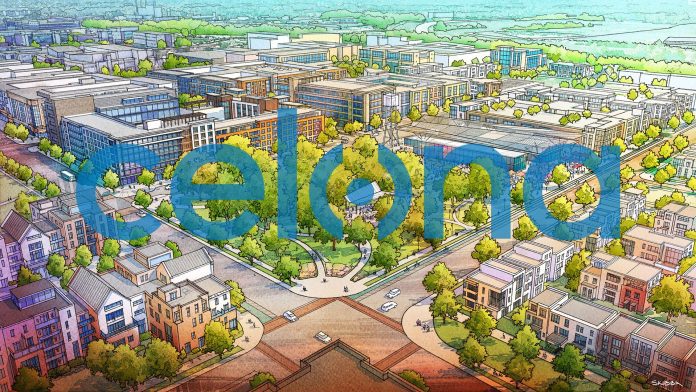Private LTE provider Celona has announced a hat-trick of private network projects. The Cupertino firm is working with Joint Venture Silicon Valley (JVSV), a local enterprise forum in Silicon Valley, to bring CBRS-based private LTE to the Campbell Union Elementary School District in the greater San Jose area. It has also been selected by the Purdue Research Foundation (PRF) to build a “massive” private cellular network to blanket the 40-acre Discovery Park District smart-city development, adjacent to Purdue University campus in Lafayette in Indiana.
As well, it has announced a deal to integrate its private cellular system with real-time streaming analytics from Oregon-based Megh Computing. The latter provides a machine vision platform for industrial usage. The pair said they have demonstrated the concurrent operation of video analytics and private 5G in a “unified edge computing environment”. The collaboration will support “new use cases” in factories, cities, warehouses, and schools, they said, citing video-based AI for physical distance monitoring, intrusion detection, PPE compliance, and other apps.
The JVSV deal provides enhanced mobile broadband (eMBB) access for “unserved and underserved” residents. The arrangement with Megh Computing is focused on the Industry 4.0 sector, getting into ultra-reliable low-latency comms (URLLC) in manufacturing, with relevance for broader ‘smart-city’ projects too. The deployment with PRF, already live, covers both eMBB and URLLC, for broadband-infill and industrial networking. The CBRS band, where Celona focuses, is an LTE affair; but Celona’s press materials go with 5G, which its core network also supports.
Celona and JVSV have worked with the Santa Clara County Office of Education (SCCOE). The SCCOE calculates that 14,000 out of the 16,000 new broadband connections created to support local students during the Covid-19 pandemic have been attached to private LTE infrastructure, using the 3.55-3.7 GHz CBRS band in the US. The new deployment with the Campbell Union Elementary School District has been funded jointly by SCCOE, with a donation from Lucile Packard Children’s Hospital. It seeks to create “permanent” solutions for students “for years to come”.
David Witkowski, executive director of the civic tech initiative at JVSV, said: “Our challenge was to provide more deterministic broadband connectivity to schools and their students in an affordable, repeatable, and scalable manner… The advent of new technologies, such as private cellular, bring capabilities previously unavailable to private organizations. This makes it easier to deal with the traditional scalability, cost, and performance problems that conventional wireless technology has struggled to overcome.”
Similarly, Celona claims its new private LTE installation at the Discovery Park District in Indiana delivers “pervasive and deterministic” wireless connectivity to Purdue University students and staff, plus local enterprises. The network provides LTE coverage indoors and outdoors. Celona said it is available for academic R&D in “smart manufacturing, agriculture, autonomous transportation, as well as AR and VR.” It stated: “It also supports smart city applications, with sensor data and remote wireless cameras providing insights into everything from parking capacity to security.”
David Broecker, chief innovation and collaboration officer at PRF, said: “With the rise of unlicensed cellular spectrum and private mobile networks, communities now have the power to chart their own course in terms of what advanced services and applications they can deliver to their members. From students getting home broadband for the first time to the Industrial IoT, the sheer diversity of customers and application requirements demonstrates how CBRS-based technologies serve businesses, schools, industrial organizations, and municipalities alike.”
Meanwhile, integration of the Megh Computing platform into the Celona LTE/5G bundle will “reduce the touches it takes to rollout new digitization projects, eliminate external latencies between the network and applications, and ensure the highest levels of security”, said Celona. Testing saw the pair connect AXIS video cameras to a Celona 5G local-area network, running data between Celona’s mobile core and Megh Computing’s VAS-100 analytics platform – deployed in docker and Kubernetes containers, respectively, within the same AWS SnowBall platform.
A statement said: “Traffic from the AXIS cameras was routed by Celona’s 5G LAN core software to Megh’s VAS-100 application – while providing complete visibility to connected devices over the enterprise network. Celona’s patent-pending MicroSlicing technology was used to automatically identify and enforce real-time quality of service levels for Megh’s VAS-100 application traffic, applying strict latency, packet loss and throughput thresholds.”
Prahbat Gupta, chief executive at Megh Computing, said: “With over a billion video cameras expected to be deployed by the end of 2021 and with over 95 percent of the video never reviewed, video analytics is widely viewed as the killer application at the edge. But today most of this video data isn’t being efficiently processed in real time at the edge by automated systems that can be easily deployed by an enterprise. With Celona, we have now proven how a cloud-native 5G LAN solution helps overcome these barriers.”
Commenting on the PRF deal, but relevant to all the latest Celona news, Rajeev Shah, the company’s chief and co-founder, said: “Given the performance requirements and diversity of applications, a private mobile infrastructure was the ideal solution to serve these myriad use cases. Celona’s cloud native architecture enabled the neutral host model that allowed… management all of applications using a single network while still delivering very specific SLAs for each separate service. The entire network is 5G-ready as the customers need to take that next step.”

